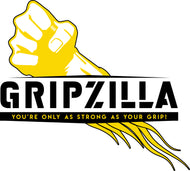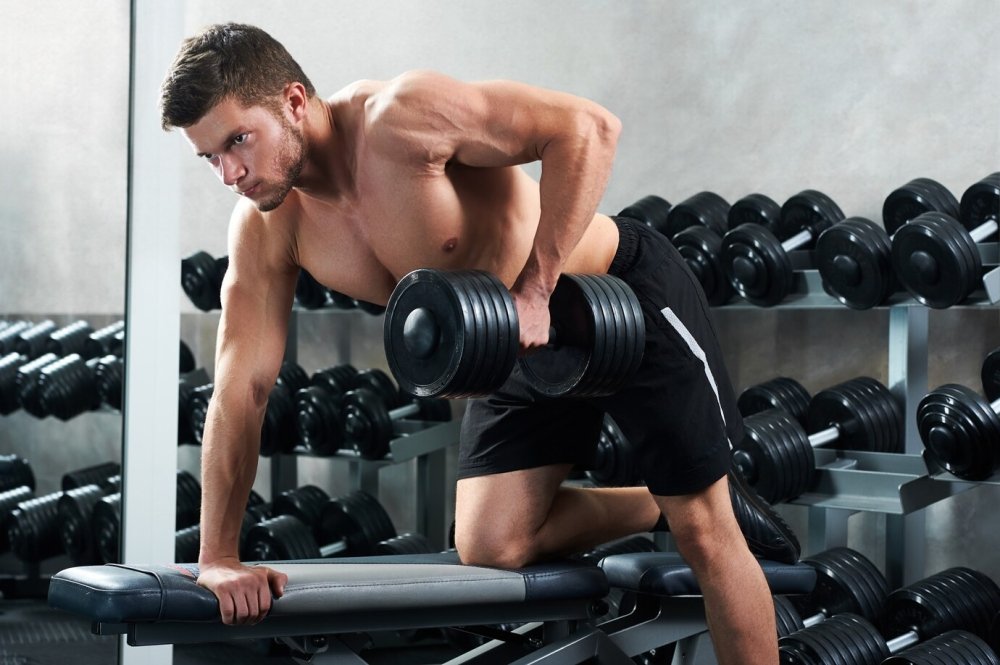For tennis players, the strength and endurance of their arms play a crucial role in the execution of powerful and controlled shots on the court.
Developing a targeted arm workout routine for tennis players can enhance their performance and contribute to injury prevention and overall well-being.
Moving forward, we'll explore a list of workouts that will seriously boost a tennis player's arm strength.
Let’s find out how these exercises can benefit tennis enthusiasts, offering a practical approach to arm conditioning that goes beyond the traditional gym routine:
Best Arm Strength Exercises For Tennis Players
Here are a couple of ingenious arm exercises specifically for tennis players:
1. Gripzilla Tornado

Gripzilla Tornado offers targeted benefits for tennis players by focusing on grip strength and forearm development.
As players stand upright and extend their arms while curling the Tornado upward, the exercise mimics the motions involved in wielding a tennis racket during various strokes.
By flexing the wrists and contracting forearm muscles without jerky movements, tennis players can enhance their ability to maintain a firm and controlled grip on the racket.
Holding briefly at chest level before slowly reversing the motion contributes to improved strength and endurance in the arms, crucial for sustained performance on the tennis court.
Step-By-Step Guide:
- Hold Gripzilla Tornado firmly, position roller at the bottom.
- Set adjustable resistance for your strength level. Stand upright, extend arms, and curl Tornado upward.
- Flex wrists, contract forearm muscles, avoid jerky movements.
- Hold briefly at chest level, then reverse the motion slowly.
- Experiment with hand positions and personalize movements.
- Gradually increase resistance for steady strength development.
2. Gripzilla Dynamo

By rotating the knobs of Gripzilla Dynamo to set the resistance level, players can customize the intensity to match their individual strength and fitness goals.
The ability to choose hand positions, whether horizontal, vertical, or at a 45-degree angle, allows for a diverse range of movements that engage various muscle groups.
Engaging in dual-directional rotations comprehensively activates forearm muscles, enhancing the overall strength required for executing precise and forceful shots on the tennis court.
Step-By-Step Guide:
- Adjust resistance on Gripzilla Dynamo by rotating knobs.
- Customize resistance for individual strength and fitness goals.
- Choose hand position (horizontal, vertical, 45-degree angle).
- Engage in dual-directional rotations for forearm muscle activation.
- Get creative with personalized movements targeting specific areas.
- Gradually progress by starting with comfortable resistance and increasing intensity.
3. Hand Grippers


Hand grippers are excellent for tennis players as they specifically target the muscles in the hands and fingers, helping to enhance grip strength.
A strong grip is crucial in tennis for holding the racket firmly, controlling shots, and maneuvering the ball during play.
By regularly using hand grippers, players can develop better hand endurance and control, ultimately improving their ability to handle the demands of gripping and maneuvering the tennis racket throughout a match.
Step-By-Step Guide:
- Hold the hand gripper in one hand with your fingers wrapped around the handles and your thumb on the opposite side.
- Squeeze the hand gripper together using your fingers and palm.
- Hold the squeeze for a moment and then slowly release it back to the starting position.
- Repeat the squeezing motion for the recommended number of repetitions.
- Switch to the other hand and repeat the exercise.
4. Wrist Curls

Wrist curls are beneficial arm workouts for tennis players as they focus on the muscles in the forearm, particularly the flexors responsible for wrist movement.
Strengthening these muscles is essential for executing powerful and controlled shots, including forehands and backhands.
Improved wrist strength also contributes to better racket control and stability, aiding players in maintaining accuracy and precision during their swings on the tennis court.
Step-By-Step Guide:
- Sit on a bench or chair with a dumbbell in one hand or hold a barbell with an underhand grip.
- Rest your forearm on your thigh or on a bench with your wrist just beyond the edge.
- Allow the wrist to lower, extending it downwards.
- Curl the wrist back up towards you, lifting the weight.
- Repeat for the recommended number of repetitions.
- Switch to the other hand and repeat the exercise.
5. Medicine Ball Slams

Medicine ball slams are a dynamic and explosive exercise that engages the entire upper body, including the arms, shoulders, and core. This exercise helps tennis players develop the fast-twitch muscle fibers needed for quick and powerful shots.
The forceful slam motion mimics the explosive movements required in tennis, such as serving and overhead shots.
Additionally, the rotational aspect of the movement contributes to core strength, which is crucial for stability and balance during dynamic tennis actions.
Step-By-Step Guide:
- Stand with your feet shoulder-width apart, holding a medicine ball with both hands.
- Lift the medicine ball overhead, fully extending your body.
- Explosively slam the ball onto the ground as hard as possible.
- Catch the ball on the bounce or pick it up and repeat the motion.
- Perform the recommended number of repetitions.
6. Forearm Plank

The forearm plank is an isometric arm workout for tennis players that target the core, shoulders, and arms. It is particularly beneficial for tennis players as it helps develop overall upper body strength and stability.
A strong core is essential for efficient energy transfer and balance during shots, allowing players to generate power from their core muscles.
Moreover, the forearm plank aids in building endurance in the shoulder and arm muscles, promoting sustained performance on the court and reducing the risk of fatigue-related errors during prolonged matches.
Step-By-Step Guide:
- Begin in a plank position with your forearms on the ground, elbows directly beneath your shoulders.
- Keep your body in a straight line from head to heels.
- Engage your core muscles and hold the position, avoiding sagging or lifting your hips too high.
- Aim to hold the plank for a specific amount of time, gradually increasing the duration as you build strength.
- To end the plank, lower your knees to the ground and rest.
Over To You
Incorporating targeted arm workouts into your training routine can significantly benefit tennis players. Strengthening the arms enhances racket control and power and helps prevent injuries.
By focusing on exercises that improve forearm strength, shoulder stability, and overall arm endurance, tennis players can optimize their performance on the court and enjoy a more competitive edge.
Remember to balance these workouts with proper rest and recovery to ensure a well-rounded and sustainable approach to tennis-specific fitness.



